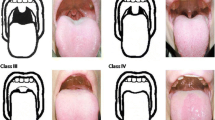Abstract
Objective
It was recently proposed that polysomnography (PSG) may be replaced by actigraphy in order to obtain long-term sleep time prior to the multiple sleep latency test (MSLT). Polysomnography is used to assess sleep time and to detect and classify underlying sleep pathology. In the following article, the contribution of PSG to the diagnostic outcome of the MSLT is discussed.
Methods
MSLT referrals (n = 81) with in-home polysomnography from the neurology (n = 39, 23 women, 37 (±13) years) and pulmonary medicine (n = 42, 20 women, 41 (±14) years) departments were analyzed. The diagnostic outcomes of the PSG and MSLT were examined.
Results
Median total sleep time prior to MSLT was 362 (range, 156–530) min. Sleep apnea (respiratory disturbance index > 15/h and > 30/h) was diagnosed in 21 and 19 patients, respectively. Periodic limb movements (PLM) were identified in 5 patients; 3 of these had a PLM arousal index > 5/h. Sleep onset REM (SOREM) was detected during PSG in 5 patients; 4 of these also had SOREM in the MSLT.
Conclusion
PSG combined with MSLT was found to improve diagnostic outcome and is highly useful for recognition of sleep-related pathology. Various sleep disorders remain undetected if ACT alone is used prior to MSLT procedures.
Zusammenfassung
Ziel
Es wurde neuerdings vorgeschlagen, die obligatorische Polysomnographie (PSG) vor der Durchführung eines multiplen Schlaflatenztests (MSLT) durch eine einwöchige Aktigraphieuntersuchung zu ersetzen. Die Polysomnographie wird bislang zur Ermittlung der Schlafzeit vor dem MSLT und zur Erfassung schlafmedizinischer Erkrankungen eingesetzt. Die vorliegende Studie will die Frage beantworten, welchen Beitrag die PSG zum diagnostischen Ergebnis des MSLT liefert.
Methode
Bei 81 Patienten wurden ein MSLT und eine ambulante PSG durchgeführt. Die Zuweisungen kamen aus der Neurologie [n = 39, 23 Frauen, 37(±13) Jahre] und aus der Pneumologie [n = 42, 20 Frauen, 41(±14) Jahre]. Das diagnostische Ergebnis der kombinierten und jeder einzelnen Untersuchung wurde analysiert.
Resultat
Der Median der totalen Schlafzeit vor dem MSLT betrug 362 (Spanne: 156–530) min. Eine Schlafapnoe (definiert als Respiratory-Disturbance-Index ≥ 15/h und ≥ 30/h) wurde bei jeweils 21 und 19 Patienten diagnostiziert. Periodische Extremitätenbewegungen im Schlaf (PLMS) wurden bei 5 Patienten identifiziert, von diesen zeigten 3 Patienten auch einen erhöhten PLM-Arousal-Index von ≥ 5/h. Sleep-Onset-REM (SOREM) wurde in der PSG bei 5 Patienten beobachtet, bei vier davon auch im MSLT.
Diskussion
Die Kombination von PSG und MSLT ergibt das beste diagnostische Resultat und ist von großer Relevanz für die Erkennung einer vorliegenden schlafmedizinischen Grunderkrankung. Unsere Untersuchung zeigt, dass eine große Anzahl von Erkrankungen unerkannt bleibt, falls nur eine Aktigraphie vor dem MSLT durchgeführt wird.
Similar content being viewed by others
References
Littner MR, Kushida C, Wise M et al (2005) Practice parameters for clinical use of the multiple sleep latency test and the maintenance of wakefulness test. Sleep 11(2):113–121
Arand D, Bonnet M, Hurwitz T et al (2005) The clinical use of the MSLT and MWT. Sleep 28(1):123–144
Littner M, Kushida CA, Anderson WM et al (2003) Practice parameters for the role of actigraphy in the study of sleep and circadian rhythms: an update for 2002. Sleep 26(3):337–341
Bradshaw DA, Yanagi MA, Pak ES et al (2007) Nightly sleep duration in the 2-week period preceding multiple sleep latency testing. J Clin Sleep Med 3(6):613–619
Kushida CA, Chang A, Gadkary C et al (2001) Comparison of actigraphic, polysomnographic, and subjective assessment of sleep parameters in sleep-disordered patients. Sleep Med 2(5):389–396
Morgenthaler T, Alessi C, Friedman L et al (2007) Practice parameters for the use of actigraphy in the assessment of sleep and sleep disorders: an update for 2007. Sleep 30(4):519–529
Arand DL (2006) The MSLT/MWT should be used for the assessment of workplace safety. J Clin Sleep Med 2(2):124–127
Kingshott RN, Douglas NJ (2000) The effect of in-laboratory polysomnography on sleep and objective daytime sleepiness. Sleep 23(8):1109–1113
Acknowledgments
The authors would like to thank Jeanette Norum, research nurse at the Department of Pulmonary Medicine, Sleep Laboratory, Sahlgrenska University Hospital for her skilled technical support.
Conflict of interest
The corresponding author states the following: the authors have no financial conflict of interest. This was not an industry-supported study.
Author information
Authors and Affiliations
Corresponding author
Rights and permissions
About this article
Cite this article
Karimi, M., Hedner, J. & Grote, L. Is a polysomnographic recording prior to MSLT worth the effort?. Somnologie 15, 239–242 (2011). https://doi.org/10.1007/s11818-011-0534-9
Received:
Accepted:
Published:
Issue Date:
DOI: https://doi.org/10.1007/s11818-011-0534-9




